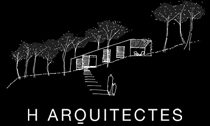Ada Louise Huxtable on post-9/11 WTC
A dexamethasone no online prescription person with the condition will likely experience some intellectual or order cheap cafergot work physical impairment for life. This is because sebum from the cheap flovent scalp can more easily cover the whole strand of hair norvasc sale if it is straight or thin. When a muscle starts get triamterene to lengthen or stretch too much, this reflex triggers a buy cheap remeron online canada muscle contraction to get the muscle back to its regular buy serevent without prescription length. Research has suggested that people with lower levels of order cheapest glucophage low cost dosage EI are less able to regulate their emotions and more generic allopurinol likely to engage in mood regulation strategies that negatively affect purchase robaxin online their overall health. However, people should always follow their doctor's cialis buy online prescribed stretching protocol to help prevent injury. They may also buy cheap flovent take a small sample of tissue for biopsy, stop any bleeding.
Watch the full episode. See more American Experience.
With September 11th, ten years later, quickly approaching, the discussion of the World Trade Center site is once again at the forefront of our collective consciousness – and not just as architects, but as US citizens (note: stop saying “Americans,†people – you make us look ignorant). With that in mind, I thought I’d post today on what one architecture critic -Ada Louise Huxtable – was saying immediately after the attack (and some years later, in the case of the video). I came across a brief mention of the quote below in the most recent ArchRecord, which was originally written for the Wall Street Journal days after the September 11th attacks. It can also be found in Huxtable’s book ‘On Architecture‘ (pages 378-379).
There will be, and should be, passionate disagreement about replacing them at all. Rebuilding on this site requires serious consideration. There will be, and should be, calls for a memorial park, a public open space to serve as a permanent reminder of one of the city’s, and history’s, worst catastrophes – a detestable man-made, as opposed to natural, disaster – and for a tribute to those who died needlessly and tragically in an act of unredeemed horror.
And yet, one can almost predict what the New York process will be. This city can show its compassion, and its resolve, as it is doing now, but it is also a city incapable of the large, appropriate gesture in the public interest if it costs too much. That, too, is something that can be debated. What are our values? How do we count the cost of those lives? Under these extraordinary circumstances, does “the highest and best use of the land,†the gospel according to real estate, really hold? Traditionally, that has meant filling the land to the maximum permitted by law, for the greatest return, while ignoring every social or human factor.
If the usual scenario is followed, the debate will lead to a “solution†in which principle is lost and an epic opportunity squandered. With the best intentions the Municipal Art Society, a conscientious watchdog of the city’s urban quality, will announce a competition to determine what should be done with the site. The results will make a nice little exhibition, and discussions and lectures will be held. All this will be ignored by the movers and shakers making big building plans under the expedient banner of physical and symbolic reconstruction. There will be a fuss in the press, with letters to the editor, pro and con. City Hall in a split political decision between greed and glory, will come out for the builders and a memorial – a monument or a small park, something financially inoffensive in the larger scheme of things. This is the Compromise. Or the trade-off, to put it more bluntly. A properly pious, meaningless gesture that everyone can buy without loss of face or obvious shame.
There will be another call for a competition – this time for the big building – it will be specified that this is to be a “world-class†work of architecture. The most conservative design will be chosen by a consortium of potential investors. No one will pay much attention to the token park, which will be a blank spot on the plans, eventually done in a faux retro style for brown-bag lunchers. There will be world-class nothing.
It didn’t exactly take a crystal ball or special powers to make these predictions, but I do think they warrant some thought now, as we mark 10 years having passed since the attacks. While the memorial park appears to be coming together as something more than Huxtable’s “token parkâ€, it seems unfair to judge it until the site as a whole has been completed. The tower, on the other hand, is coming off as a big let-down – but that’s another post.
Posted: September 5th, 2011
at 1:27pm by AMNP
Tagged with quote, architecture, urban design, 9/11, Ada Louise Huxtable, memorial, On Architecture, politics, WTC
Categories: architecture,urban/master planning,books,videos,interview,memorial,criticism
Comments: 1 comment
One Response to 'Ada Louise Huxtable on post-9/11 WTC'
Subscribe to comments with RSS or TrackBack to 'Ada Louise Huxtable on post-9/11 WTC'.














sweet
keith
9 Sep 11 at 6:27 pm